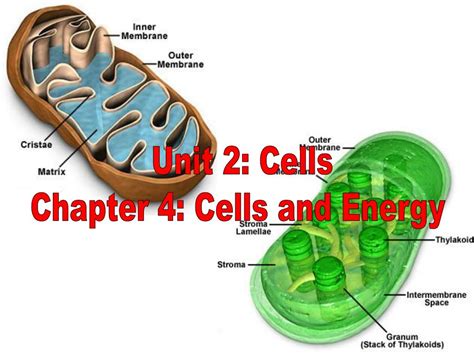Cell energy is a crucial concept in biology, providing the foundation for understanding the processes that sustain life. This comprehensive topic list explores key aspects of cell energy, encompassing essential concepts, applications, and implications. Dive into the fascinating world of cellular respiration, ATP, and more to unravel the intricate workings of life.

Metabolism
- Overview of Metabolism
- Types of Metabolism (Catabolism, Anabolism)
- Importance of Metabolism in Cells
Cellular Respiration
- Overview of Cellular Respiration
- Stages of Cellular Respiration (Glycolysis, Citric Acid Cycle, Electron Transport Chain)
- Role of Mitochondria in Cellular Respiration
Photosynthesis
- Overview of Photosynthesis
- Stages of Photosynthesis (Light-Dependent Reactions, Light-Independent Reactions)
- Role of Chloroplasts in Photosynthesis
ATP (Adenosine Triphosphate)
- Structure and Function of ATP
- ATP as the Energy Currency of Cells
- Role of ATP in Cellular Processes
Fermentation
- Overview of Fermentation
- Types of Fermentation (Alcoholic Fermentation, Lactic Acid Fermentation)
- Applications of Fermentation in Industry
Bioenergetics
- Laws of Thermodynamics Related to Cell Energy
- Free Energy and Exergonic/Endergonic Reactions
- Efficiency of Energy Transfer in Cells
Applications of Cell Energy
- Role of Cell Energy in Stem Cell Research
- Energy Production in the Food Industry
- Biofuels and Alternative Energy Sources
New Frontiers in Cell Energy Research
- Engineering Enzymes for Improved Efficiency
- Development of Artificial Photosynthesis Systems
- Energy-Storing Materials for Future Technologies
Table 1: Stages of Cellular Respiration
| Stage | Purpose | Location |
|---|---|---|
| Glycolysis | Initial breakdown of glucose | Cytoplasm |
| Pyruvate Oxidation | Conversion of pyruvate to acetyl-CoA | Mitochondrial Matrix |
| Citric Acid Cycle | Generation of high-energy electrons | Mitochondrial Matrix |
| Electron Transport Chain | Transfer of electrons for ATP synthesis | Mitochondrial Inner Membrane |
Table 2: Pros and Cons of Fermentation
| Pros | Cons |
|---|---|
| Produces energy without oxygen | Limited ATP yield |
| Occurs in various microorganisms | Less efficient than cellular respiration |
| Used in industrial applications | Can produce unwanted byproducts |
Table 3: Applications of Fermentation
| Application | Product | Industry |
|---|---|---|
| Alcoholic Fermentation | Ethanol | Beverage, Fuel |
| Lactic Acid Fermentation | Lactic Acid | Food Preservative, Pharmaceuticals |
| Cheesemaking | Lactic Acid, Carbon Dioxide | Dairy |
| Yogurt Production | Lactic Acid | Food Industry |
Table 4: Laws of Thermodynamics Related to Cell Energy
| Law | Description |
|---|---|
| First Law of Thermodynamics | Energy cannot be created or destroyed, only transferred or transformed. |
| Second Law of Thermodynamics | Entropy (disorder) of a closed system increases over time. |
| Third Law of Thermodynamics | Entropy of a perfect crystal at absolute zero is zero. |
Frequently Asked Questions (FAQs)
-
What is the role of ATP in cells?
ATP is the energy currency of cells, providing the energy required for cellular processes. -
How does photosynthesis contribute to the global ecosystem?
Photosynthesis is essential for oxygen production and carbon dioxide consumption, maintaining the balance of atmospheric gases. -
What are some applications of fermentation in everyday life?
Fermentation is used in the production of foods and beverages such as bread, cheese, yogurt, and alcoholic drinks. -
How can cell energy research benefit society?
Cell energy research has the potential to address energy challenges, improve medical treatments, and develop sustainable technologies. -
What is the importance of metabolism in maintaining cellular homeostasis?
Metabolism ensures a constant supply of energy and building blocks, regulates temperature, and eliminates waste products to maintain cellular stability. -
How does the electron transport chain contribute to ATP synthesis?
The electron transport chain generates a proton gradient across the mitochondrial inner membrane, which drives ATP synthesis through ATP synthase. -
What are the key differences between aerobic and anaerobic respiration?
Aerobic respiration uses oxygen as the final electron acceptor, while anaerobic respiration does not. Aerobic respiration produces more ATP than anaerobic respiration. -
How does bioenergetics help us understand cell energy processes?
Bioenergetics provides a framework to calculate energy changes and predict the feasibility of cellular reactions based on thermodynamic principles.
